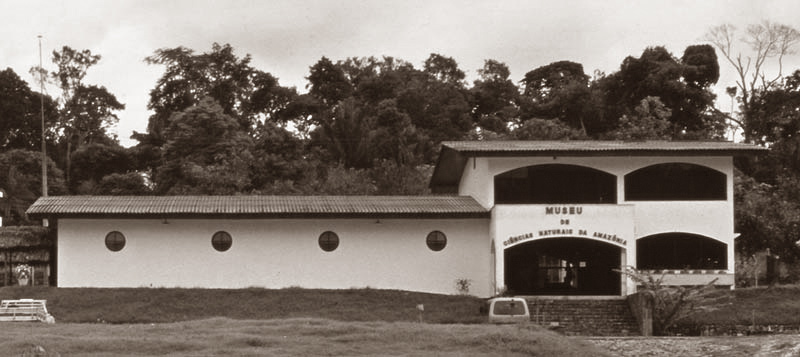We regret to announce that the Amazon Natural Science Museum will be closed on April 2, 2011.
I must admit that I have run out of steam. I am giving up management of the Museum which was opened on June 22, 1988--on the day we celebrated the 80th anniversary of the immigration of Japanese settlers to Brazil--with the attendance of Prince Akishino and Governor of the State of Amazonas.
It's time for retirement. As it happens, I am turning 66 years old on the following day of the closing date.
In the past 23 years, the Museum has featured aquariums totaling approximately 200 tons to house at least two pirarucus, each measuring 2.5 meters and weighing not less than 150 kg.
At one time, there were four of them taking residence in the Museum, but their upkeep became too expensive, so the aquariums were depopulated down to two, keeping pace with the dwindling number ofvisitors.
When I say it cost me a lot of money, most people would naively think that the giant fish ate my fortune away, foraging for tons of food, but that wasn't the case.
In order for the audience to have a clear view and good time in front of my aquariums, I had to keep the underwater visibility at 8 meters by circulating the entire amount of water therein twice a day.
As you are already aware, feeding pirarucus is bound to face the consequence in the form of excretion. My aquarium system is so designed as to discharge most of the excremental matter, but one of those things is that there are always some phytoplanktons and algae that thrive on the residual ordure, and their proliferation will change the color of water to an opaque green.
I had a card up in the sleeve--zooplanktons. They feed on phytoplanktons and the like. So all I had to do was to cheerlead the mighty predators into their promised future. But alas! The phytoplanktons flourishing on the residues of feces from four pirarucus outnumbered the zooplanktons by a huge margin.
I did some quick arithmetic in a more philosophical moment. Hmmm, with four pirarucus, I had to do the cleaning of the aquariums four times a year plus a monthly water exchange. Now with two pirarucus, maybe I, and the pirarucus, can happily live with biannual cleaning and quarterly water exchange!
Going to the other extreme end of the pirarucu population pendulum, I think it's possible to raise up to six of them in the existing facilities of the Museum. But then, after brief reflection, I came to a conclusion that the requirement for physically demanding cleaning work six times a year and water exchange almost 20 times a year would be a bit too much for me.
You can't use detergent or any chemical of that sort for cleaning aquariums, so it would take five hours for four to five youngsters to scrub off thin green carpets of aglae from all faces of the aquariums. Yes, you'd have to bring in batteries of manpower.
Speaking of manpower, they say that the total human population just prior to the Industrial Revolution was little less than 2 billion, while it is currently about to reach 7 billion. It seems to me that the global environmental concerns of our time boil down to the question of who should shoulder the costs of "cleaning" the polluted earth.
And that reminds me of the challenges I had to address when rearing pirarucus in my aquariums.
As a token of my deep appreication of their long service, the pirarucus in captivity in my aquariums will be able to spin out their retirement in a little larger body of water, i.e. the pond within the Museum's complex; I am planning to remove the roof of the Museum following its closure so that the acquariums can be craned out of the place before the living fossils are set (relatively) free in the pond. But it appears less likely that I will be able to enjoy a similarly easy-going retirement life for the time being.
As for the Museum, I have no visibility of its future resumption of activity/service at the moment; if we are lucky to see it reopened in a few years' time, the person at the helm then would not be me but somebody else.
I wonder if that will be the case, but if it is, the upcoming closure will mean the beginning of a temporary closure, but as far as I am concerned, my Museum will be closed for good.
I would like to take this opportunity to thank all the people who have visited our Museum and web site, and supported and encouraged us in our enterprise for such a long time. ARIGATO GOZAI MASHITA.
February 28, 2011
Shoji Hashimoto
Director-general
The Amazon Naturalist Society

[TOP]